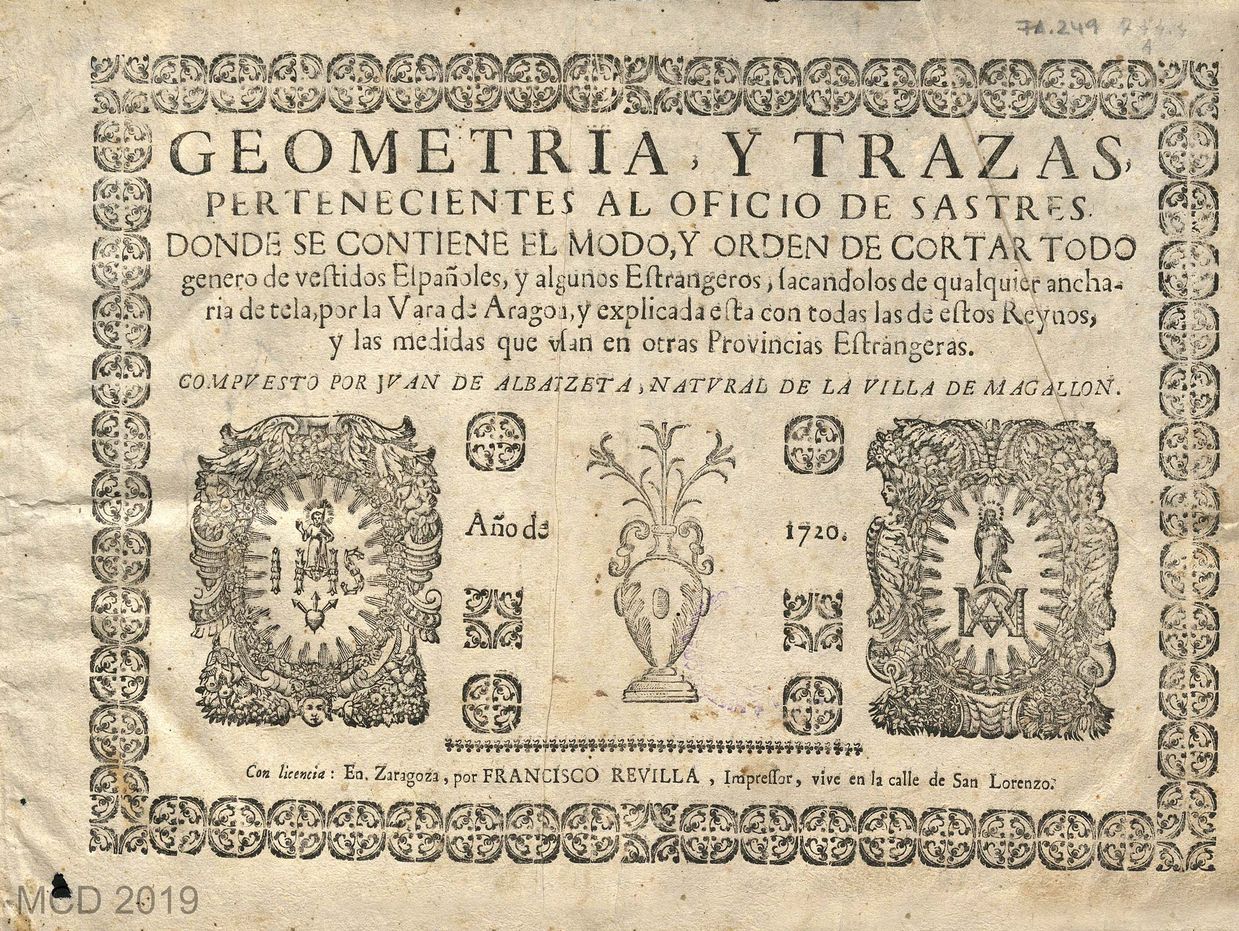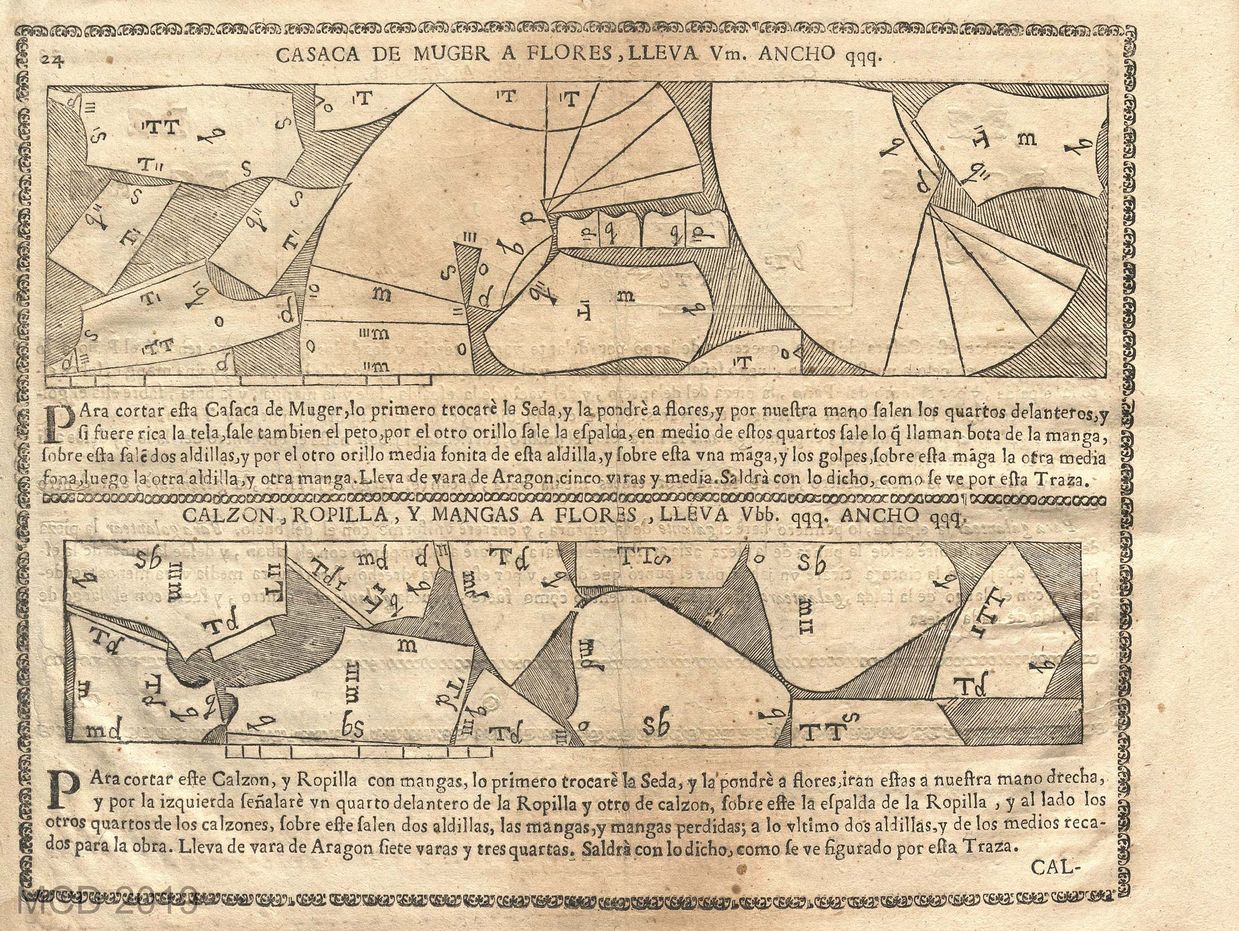→
In the Early Modern Period different garment types were related to specific fabrics used in their manufacture. We can see this in period books such as Geometría y Trazas (Geometry and Designs) by Juan de Alcega (Madrid, 1580), Francisco de la Rocha (Valencia, 1680), Martín de Andújar (Madrid, 1640) and Juan de Albayceta (Zaragoza, 1720). This relationship and codification came to influence the importance of the choice of fabric-texture to define the shape and volume of the garments, and consequently the figure of the person who wears them.
Certain decrees were set forth to codify the use of clothes and limit the cost of their purchase, dictating the garments that should be worn according to social status: the fabrics and trimmings and the maximum amount that could be spent on making them. In addition, they protected the prosperity of local and national producers versus imported fabrics and decorations.
In eighteenth century Spain, only one general law (dated 15th November 1723) was issued on costume, prohibiting brocades, fabrics embroidered with gold or silver, galloons, braids, buttons, ribbons or any adornment with these metals, for everyone, without distinction of gender or social rank.

